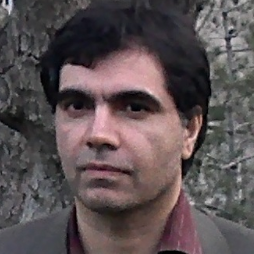
Hamed Shah-Hosseini
Work place: Freelance researcher, Tehran, Iran
E-mail: tasom2002@yahoo.com
Website:
Research Interests: Computer systems and computational processes, Computer Vision, Evolutionary Computation, Neural Networks, Swarm Intelligence, Computer Networks
Biography
Hamed Shah-Hosseini was born in Tehran, Iran, in 1970. He received the B.S. degree in Computer Engineering from the University of Tehran. He also obtained the M.S. and Ph.D. degrees both in Computer Science (Artificial Intelligence) from the Amirkabir University of Technology, all with high honors. For seven years, he was an assistant professor in the Faculty of Electrical and Computer Engineering of Shahid Beheshti University. However, he could not continue his career there due to several non-academic conducts imposed on him. As a result, he is currently a freelance researcher.
His research interests include Computational Intelligence especially Neural Networks, Evolutionary Computation, Swarm Intelligence, and Computer Vision. He proposed the Time-Adaptive Self-Organizing Map (TASOM) networks for both stationary and nonstationary environments. Moreover, he introduced two nature-inspired optimization algorithms: “Intelligent Water Drops” algorithm (or IWD algorithm) and “Galaxy-based Search Algorithm” (or the GbSA). In addition, he presented a Generalized Taylor’s (G-Taylor’s) Theorem.
Author Articles
Multilevel Thresholding for Image Segmentation using the Galaxy-based Search Algorithm
DOI: https://doi.org/10.5815/ijisa.2013.11.03, Pub. Date: 8 Oct. 2013
In this paper, image segmentation of gray-level images is performed by multilevel thresholding. The optimal thresholds for this purpose are found by maximizing the between-class variance (the Otsu’s criterion). The optimization (maximization) is conducted by a novel nature-inspired search algorithm, which is called Galaxy-based Search Algorithm or GbSA. The proposed GbSA is a metaheuristic for continuous optimization. It resembles the spiral arms of some galaxies to search for the optimal thresholds. The GbSA also uses a modified Hill Climbing algorithm as a local search. The GbSA also utilizes chaos for improving its performance, which is implemented by the logistic map. Experimental results show that the GbSA finds the optimal or very near optimal thresholds in all runs of the algorithm.
[...] Read more.Other Articles
Subscribe to receive issue release notifications and newsletters from MECS Press journals